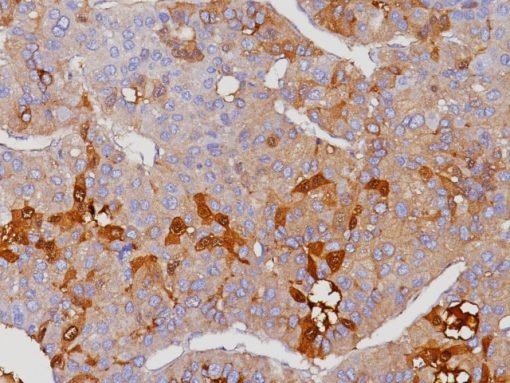Description
The primary source of energy for tumor cells is glutamine, which is synthesized by the enzyme glutamine synthetase (GS). Analysis of elevated ubiquitinated protein in hepatocellular carcinoma (HCC) and its progressive rise in expression from precancerous lesions to early advanced HCC was the first method to identify accumulation of GS. Small hepatocellular lesions, which are frequently morphologically difficult and necessitate careful differentiation between dysplastic nodules (high-grade) and well-differentiated HCC, are the main focus of liver biopsy for HCC identification. The sensitivity and specificity for the detection of early and HCC-G1 were 72% and 100%, respectively, when a panel of GS, Heat Shock Protein 70, and Glypican 3 is utilized, and if any two of the three are positive. Additionally, GS activity is an indicator of astrocytes that can be utilized to differentiate between oligodendroglial and astrocytic tumors and may be involved in the pathophysiology of astrocytomas.
Specifications
| Weight | N/A |
|---|---|
| Dimensions | N/A |
| Intended Use | RUO |
| Species Reactivity | Human |
| Source | Mouse Monoclonal |
| Clone | 6/Glutamine Synthetase |
| Isotype | IgG2a |
| Antigen | Glutamine Synthetase |
| Localization | Cytoplasmic |
| Positive Control | Hepatocellular cancer |






